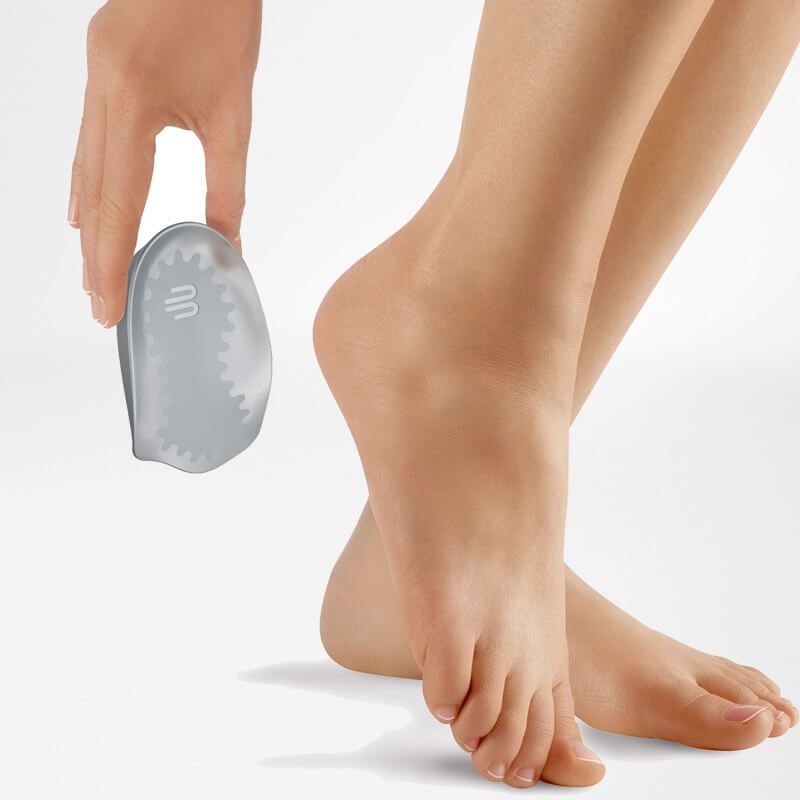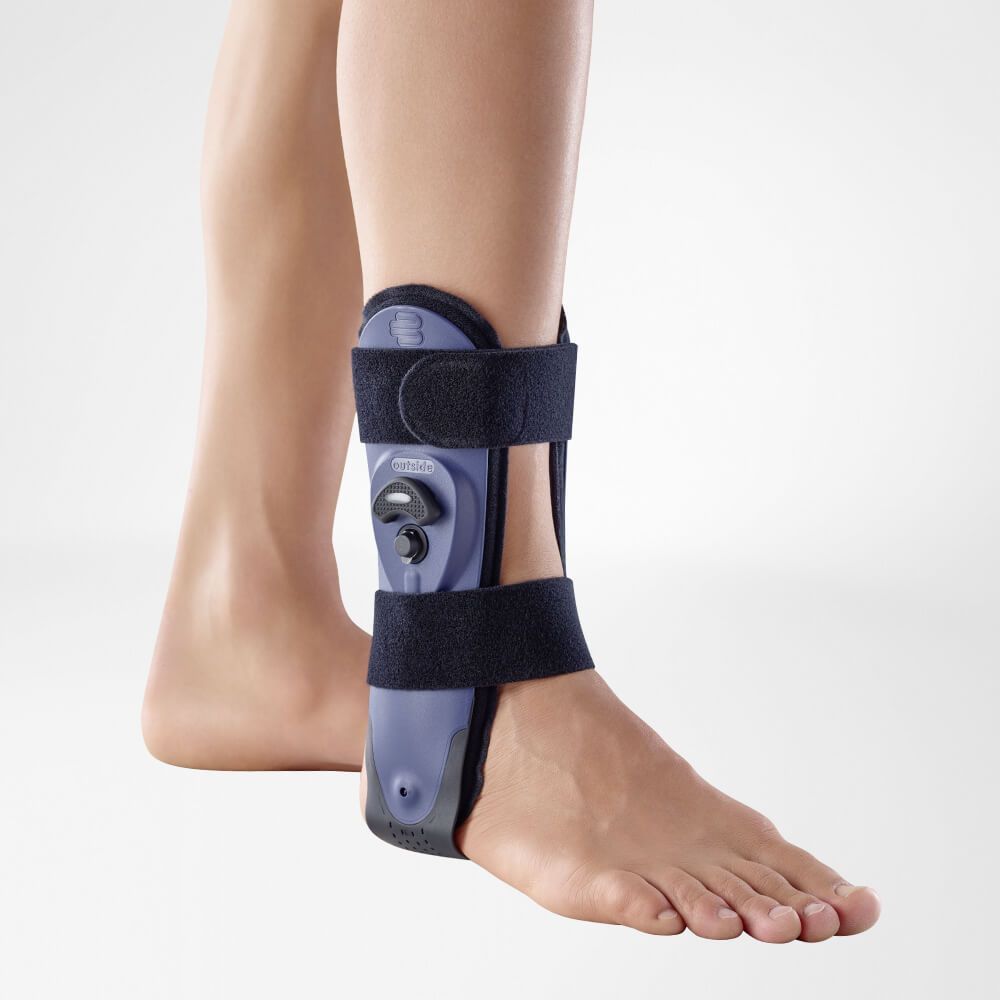Ankle Tendinitis
A tendonitis in the ankle occurs due to overuse, as the peroneal tendon becomes irritated or inflamed. This usually results from repeated or prolonged activities that strain the tendon. As a result, the ankle lacks sufficient stability, forcing the peroneal tendon to work harder to maintain balance. This can lead to tissue damage within the tendon. Want to learn more about ankle tendonitis? Read on to find out how to treat the inflammation as quickly as possible.
What is tendonitis in the ankle?
Two tendons run behind the outer ankle: the Peroneus Longus tendon and the Peroneus Brevis tendon. These are held in place by a band-like structure called the retinaculum. The tendons function to flex the ankle and lift the foot, and they also contribute to ankle stability.
When these tendons are overstrained, or if you wear the wrong type of shoes, inflammation can develop. Inflammation around the tendons, also known as tendonitis, can occur in the ankle joint. Tendonitis usually develops when the peroneal tendon becomes irritated or inflamed.

What are the symptoms?
There are several symptoms that may indicate inflammation in the ankle, such as redness or pain. Consider whether you’re experiencing any of the following symptoms:
- Pain
- Redness
- Swelling
- Fluid retention after activity
- Dull or sharp pain
What causes tendonitis in the ankle?
Inflammation in the ankle can develop due to repetitive or prolonged activities. This may be caused by overuse or improper footwear. Review the causes below and consider what might have led to your symptoms, so your doctor or physiotherapist can create an appropriate treatment plan.
- (Sports) activities
- Foot posture
- Fatigue
- Improper footwear
- Being overweight
- Poor training progression
Complaints may also arise after twisting or spraining the ankle.
Diagnosis of tendonitis
Do you recognize any of the symptoms above, but aren’t sure if it’s tendonitis? Consult a doctor or physiotherapist to ensure the ankle is treated as soon as possible. To diagnose the condition, it’s best to have an ultrasound scan of the ankle. This allows the doctor to see whether it’s inflammation or a more serious issue, such as a rupture or dislocation.
Treatment
There are various treatment options available for treating tendon inflammation. It's important to address the issue as soon as possible to prevent worsening of swelling or pain. Below, you’ll find what you can do yourself, and what steps to take if self-care doesn’t work.
Self-care
If you haven’t had the chance to see a doctor yet, you can take the following steps to reduce pain. The key is to reduce strain on the tendons:
- Stop sports activities
- Use a brace
- Wear insoles
- Take pain relief
- Consult a physiotherapist
Medical interventions
If the above measures aren’t effective and swelling and pain persist, it’s advisable to see your GP. It’s possible that the tendons have completely torn or become dislocated. In such cases, surgery may be necessary. Your doctor can provide advice on the best course of action to help you get back on your feet as soon as possible.
How can you prevent tendonitis in the ankle?
Have you sprained your ankle before? That increases the risk of tendon inflammation. Measures you can take to prevent ankle tendonitis include:
- A proper warm-up before sports
- Use a brace during sports
- Wear the right shoes
- Use insoles in your shoes
When are you recovered from tendonitis in the ankle?
The symptoms of tendonitis can last from several weeks to months. It depends on how long the inflammation has been present and how well you care for the ankle afterward. If you start a recovery plan right away and follow the measures mentioned above, healing will be faster, unless something else is going on, in which case recovery may take longer.
Treating tendonitis in the ankle?
Think you might have tendonitis in the ankle after reading this? Don’t wait, support your ankle so you can get back on your feet as soon as possible. At Podobrace, we offer special ankle braces for extra support. Have questions about which brace suits your specific complaint or another question? Contact our team of specialists. We’re happy to help support your recovery.

Bauerfeind ViscoHeel Heel Pads

Bauerfeind MalleoTrain S Ankle Support

Bauerfeind MalleoTrain Ankle Support
Protection level 2
Bauerfeind MalleoTrain Plus Ankle Support
Protection level 2
Bauerfeind AirLoc Ankle Support
Protection level 3
Gladiator Sports Lightweight Ankle Support with Straps

Morsa ThermoCY Lightweight Ankle Football Support

Dunimed Premium Ankle Support (Black & Beige)

- Physiotherapist
- Sports podiatrist
- Manual therapist
- Podopostural therapist
- Myofascial dry needling specialist


